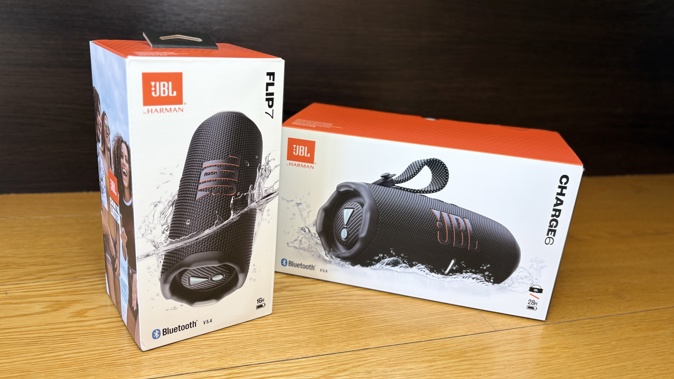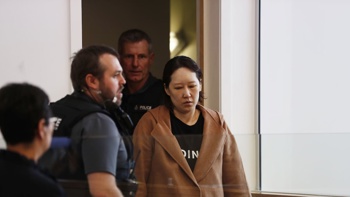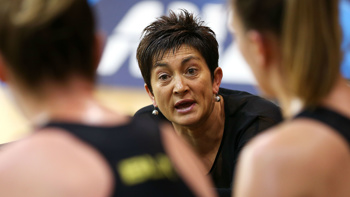
From tiny speakers you can clip to your pack, to party speakers you can use as a P.A. - even with their own light show - JBL has a bluetooth speaker to suit any occasion.
Not only is there a dizzying range to choose from, many are the critics' choice in their category.
It's not just about sound quality, although JBL now has an established reputation for producing speakers that seemingly outperform their small size.
People also love JBL's proven durability - many speakers are now both waterproof and drop-proof.
But perhaps where JBL is really setting the standard is connectivity. And two of the latest examples are no exception.
In recent years JBL's Charge series of bluetooth speakers has been an affordable but effective way of taking your music with you without compromising too much in terms of big bass and genuine power. As for the Flip; as each generation has been released it's won over more and more fans until by now it must be one of the most purchased portable out there.
The Charge 6 and Flip 7 are very similar devices - essentially the Charge 6 is a bigger, more powerful version of the Flip 7 with the added ability to charge connected devices via its USB-C port on the back. Being bigger, the Charge boasts a larger woofer and tweeter setup. The battery also lasts longer - you'll get up to 28 hours of playback as opposed to 16 on the Flip.
That's a significant battery boost for both devices over their respective predecessors though; 4 hours longer for the Flip and a generous 8 hours between the Charge 5 and Charge 6.
Unlike some ho-hum product reboots, there have actually been significant upgrades to the 2025 versions of both speakers. They're now IP68 rated for water and dust resistance and both claim a lab-tested durability upgrade that means they should survive a one-metre drop onto a concrete floor.
As all tech gadgets seem to these days, the Flip 7 and Charge 6 have vastly increased amounts of recycled materials incorporated into their construction and both come in black, blue or red.
Perhaps even more exciting are the new clip-on accessories. For the first time the Charge 6 comes with a rugged handle strap in the box. This makes carrying and hanging the speaker much easier and you can just unbutton it if you don't need it.
The Flip 7 goes a step further.
The previous carry cord has been replaced by a new PushLock system that lets you choose between a fabric carry loop or a steel carabiner. These are easily swapped out with a simple press and click.
Although both speakers are pretty much the same size as their previous models, there's no denying they sound even better - and the last ones sounded pretty damn good, by the way. This must be due to something JBL calls AI Sound Boost. Supposedly your music is being analysed in real time by this "audio genie" to provide a room-filling result with no distortion.
Whatever it is, it seems to work.
"Ever After You" by the Gabe Dixon Band is a very stripped-back track, pushing vocals, piano and bass to the foreground during the verses, with the rest of the team kicking in for the choruses. This is a great example to show how both these speakers seem to be able provide crisp, clean focus in the quieter moments, while expanding the soundscape out much wider once the drums start crashing, the guitars start wailing and the strings start stirring.
And I'm not really comparing the Flip 7 to the Charge 6 - they both perform admirably with the Charge just offering that much more volume and bass.
And when you have a really big band, like Lawrence performing "Wash Away," the best thing to do is combine the both speakers using my favourite JBL feature; Auracast.
That's not strictly accurate - Auracast is not specific to JBL although I haven't really seen it promoted by other manufacturers yet. Meanwhile, JBL is all-in and I've alreaady featured it in previous reviews. With a push of the Auracast button, you can stream from the same source via multiple speakers, as I demonstrate in the video below.
One big advantage to this is if you have one large speaker with superior bass response, it'll compensate for any smaller devices you've connected via Auracast because bass frequencies are non-directional.
The only real downside to Auracast is it's still quite new. That means although you can team up with most other recent models of JBL bluetooth speakers, you can't connect with the previous generation. Confusingly, those ones could pair with each other but using a different, JBL-specific protocol called Party Boost.
Let's hope Auracast is here to stay and becomes more brand agnostic as time goes on. Imagine your favourite playlist booming out of every speaker in the house, regardless of who made them. In the meantime, why not collect up a few JBLs?
Especially when you can actually "hard-line" into the Charge 6 via its USB-C port for even better quality, high-resolution sound.
At NZ$199.95 for the Flip 7 and only $30 more for the larger Charge 6, neither device will break the bank, although together, they may well shake the floorboards.
Click here for more information and pricing on the JBL Charge 6.
Click here for more information and pricing on the JBL Flip 7.
Take your Radio, Podcasts and Music with you
















